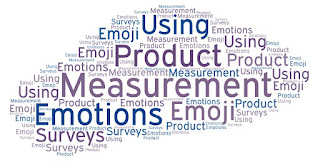.
Highlights
• Emoji surveys were used successfully to elucidate product-emotion associations to tasted samples.
• Consumers in Korea and New Zealand applied the method to a wide range of tasted foods and beverages.
• Emoji profiles primarily discriminated between samples based on emotional valence.
• Consumers regarded emoji surveys as easy and simple to complete.
• Emotional associations based on emoji and emotion word surveys were not directly comparable.
.
Abstract
An increasing number of methods exist for the measurement of product-emotion associations, and the present research implements emoji surveys for this purpose.
Emoji warrants attention due to their increasing popularity and spontaneous use by consumers in food-related communications.
Seven case studies were conducted in Korea and New Zealand (118–141 consumers per study), across which a wide range of commercially available foods and beverages were evaluated.
Product-emotional associations were obtained with CATA questions featuring 33 facial and 6 non-facial emoji.
The most frequently used emoji had positive valence, and it was by valence that the dominant sample discrimination occurred.
Samples with high overall liking were associated with positive emoji, whereas negative emoji were used to characterise samples with low overall liking.
Some evidence was found of samples with the same average overall liking scores being associated with different emoji.
There was also evidence of sample characterisation and discrimination relative to emotional arousal (high/low), but this was largely secondary to sample discrimination based on emotional valence.
Consumers perceived emoji surveys to be easy and not tedious.
A comparison of CATA questions containing 25 emoji or 25 emotion words (EsSense25) pointed to similarity in the average number of emoji/emotion words used to characterise samples.
However, a tendency for word-based responses to be more discriminative and able to determine distinctive emotional profiles for individual samples was found.
This was attributed to differences in the emotions included in the two survey formats.
Emoji should not be regarded as a direct substitute for existing word-based emotion surveys, but as an alternative method for emotion measurement.
Directions for further methodological research to refine emoji surveys are outlined.
.
Keywords
Emotion measurement, Emoticons, Research methods, Consumers, CATA questions
.
https://www.sciencedirect.com/science/article/abs/pii/S0950329317301350

